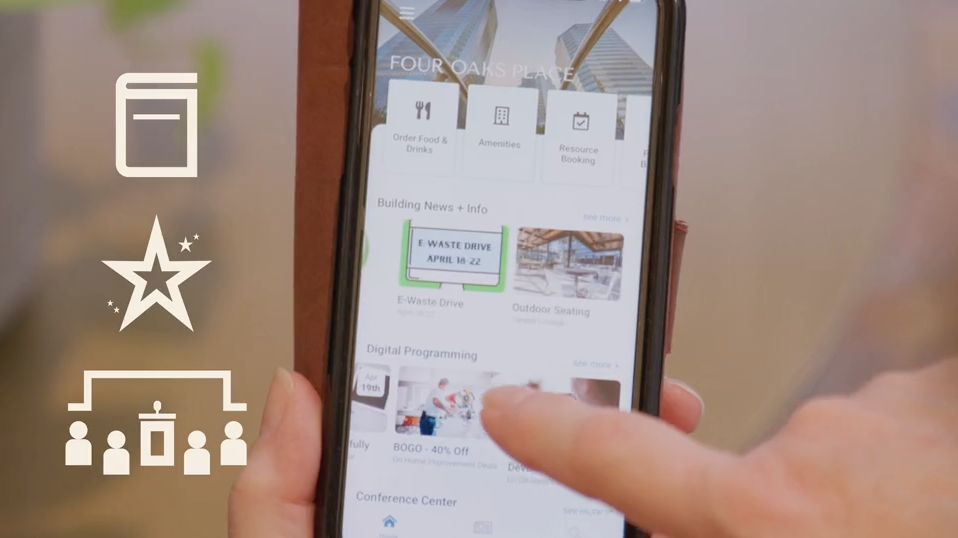An Introduction to Hybrid Work Technology
The COVID-19 pandemic led a large number of companies to adopt a hybrid work from home policy.
But what is a hybrid working policy?
Hybrid work is everywhere, but a hybrid remote work definition can sometimes be hard to come by. That’s why we’re here: to clear up the hybrid workplace meaning crisis by better defining hybrid work.
Essentially, a hybrid work from home schedule is one that allows workers to enjoy a hybrid work from home policy. A company that has adopted a hybrid work from home policy allows their workers to work from home at least a couple of days a week. This is why it’s called “Hybrid work from home.” Hybrid employees spend part of the week in the office, and part of the time working from their homes.
But a hybrid remote work definition isn’t the only piece of the puzzle. In fact, as you might expect, there’s a lot more to a hybrid working policy than a hybrid remote work definition. In the following sections of this piece, we’ll look at how hybrid work technology (the technology used by hybrid workers) can improve the success of hybrid working policy companies. A hybrid work from home schedule can be challenging for some employers, but it’s possible for everyone to succeed with the help of hybrid work technology.
Hybrid Work Model Policy Examples
Now that hybrid work is truly ubiquitous, hybrid work from home examples are easy to uncover. Apple and Microsoft, for example, will soon begin hybrid work, and are both excellent hybrid working examples. And these companies are by no means isolated cases; they’re just two hybrid work model policy examples among many others. American Express, Adobe, Uber, and Cisco are just a few of the other companies that will soon be adopting a hybrid working policy. The State of Massachusetts, British Petroleum, British Airways, and many other companies will soon be adjusting to hybrid work from home models.
In 2022, companies with hybrid work model are all over. I live in a small suburb, for example, and I can even find hybrid work from home jobs near me!
To learn more about hybrid work, consider downloading a hybrid work from home policy pdf. The raw number of companies with hybrid work model 2022 will only continue to grow.
Benefits of Hybrid Working
The benefits of hybrid working are numerous, particularly when compared to fully remote and fully in-person work. Employees are much more productive, for example, when they come into the office at least some of the time. More hours spent in the office also allows companies to build stronger corporate cultures and more meaningful workplace connections.
Moreover, in the most general sense, hybrid work is effective because it is a fair and equitable compromise between employees (who often want employees to work remotely full-time) and employers (who usually want their employees to come into the office every single day). Hybrid work, therefore, allows employees to get what they want, while also allowing employers to get what they want. This is one of the core benefits of a hybrid working policy.
But, in order to maximize the benefits of hybrid working, companies need to consider certain hybrid work model best practices. These include:
- Establishing clear communication loops with hybrid workers: in order to make hybrid work a success, companies need to communicate openly and honestly with their workers. Of course, employers can easily engage in this kind of communication through email and messaging platforms, but hybrid work communication is best optimized through the use of specialized hybrid work technology, which connects directly to employees’ phones. This allows employers to open up seamless feedback and communication loops with their employees, regardless of where those employees might be.
- Creating hybrid workplace best practices: To guarantee the long-term success of their hybrid working policies, companies also need to establish hybrid workplace best practices. These hybrid workplace best practices commonly include a list of clearly-stated rules that tell employees when they need to be in office, and what they need to do when they’re there. Each company with a hybrid working policy needs a list of hybrid workplace best practices that’s tailored to meet their needs and the needs of their employees. Among all hybrid work model best practices, the imperative to create a clear list of expectations is one of the most important.
- Supporting hybrid workers with hybrid work technology: Hybrid work technology is an essential part of a successful hybrid workplace. A workplace experience app like HqO, for example, allows employers to open up seamless communication loops with their hybrid workers, while also empowering them to create clear hybrid work best practices.
There are many benefits of hybrid working. But, in order to make hybrid work a success, hybrid employers need to create clear hybrid workplace best practices. Hybrid work model best practices allow companies to make the most out of hybrid work.
Challenges of Hybrid Working
While the benefits of hybrid working are clear, there are also a number of challenges associated with hybrid working models. Challenges of hybrid working might include barriers like disjointed communication, or a less articulated company culture, which can be weakened by poorly-configured hybrid work arrangements. These and other disadvantages of hybrid working can also be exacerbated by a lack of hybrid work technology, which can help employers open up seamless communication loops to guarantee hybrid work success. There are, in other words, a multitude of benefits and challenges of hybrid working.
In order to properly navigate hybrid working challenges and solutions, a growing number of employers are choosing to adopt hybrid work technology in their workplaces. Hybrid work technology helps employers ease the disadvantages of hybrid working by empowering them to navigate hybrid working challenges and solutions with seamless integrations and added functionalities.
Hybrid work technology (like HqO’s) accomplishes this by strengthening feedback and communication loops, while also allowing companies to build more meaningful workplace connections that boost employee productivity and workplace satisfaction. Ultimately, the opportunities of hybrid working outweigh the challenges of hybrid work environment — particularly when that hybrid work environment is equipped with hybrid work technology.
For more hybrid working challenges and solutions, follow along below. The benefits and challenges of hybrid working are both numerous, but it’s possible to make hybrid working a success with the use of hybrid work technology.
Hybrid Working Trends
In 2022, the workplace is increasingly fluid, and hybrid working trends can be difficult to pin down. But luckily for employers, a large body of research on hybrid working trends already exists. McKinsey hybrid working research, for example, shows that the future of work is most definitely hybrid: according to a recent hybrid work study by the firm, only 10% of leading US executives expect their workers to be in the office more than 80% of the time. Hybrid work model research is plentiful, and supports the importance and continued prevalence of hybrid work.
But it’s not just hybrid work McKinsey research that demonstrates the prevalence of hybrid work models. Hybrid work Harvard Business Review research reinforces the hybrid working model McKinsey findings, and also suggests that hybrid work allows companies to build stronger corporate cultures. Hybrid work Deloitte data also supports findings from the Harvard Business Review hybrid working and McKinsey hybrid work research reports.
Whether it’s hybrid work McKinsey 2022 research, or data from other sources, the consensus is more or less unanimous: hybrid work is here, and it’s here to stay. But, in order to make hybrid work a success, your company needs the right tools and hybrid work technology in order to ensure that hybrid work is successful for everyone in your organization.
The Future of Work is Hybrid
These days, it feels like it’s getting harder and harder to predict the future. But the future of hybrid work is easy to predict: research from a number of different sources forecasts a continued increase in the prevalence of hybrid work for years to come.
There may have been some uncertainty about the future of hybrid working post covid, but this appears to be dissipating. Hybrid work model 2021 and hybrid work model 2022 are popular points of discussion online, while newspapers and research reports continue to affirm the importance and uniquity of hybrid work and hybrid work technology. In short: hybrid is the future of work, and the fate of hybrid working model post covid is clear.
But is your organization prepared to make hybrid work a success?
Many companies agree that hybrid work is an effective compromise between employers and employees, but most employers are also aware of the challenges associated with hybrid working models. That’s why a growing number of companies are adopting hybrid work technology. Hybrid work technology helps employers achieve their broader business goals by streamlining communication and improving employee satisfaction and productivity.
The future of work is hybrid. And, increasingly, that future is powered with hybrid work technology.
Interested in learning more? Download one of our recent guides on hybrid work, and consider requesting a demo.


















